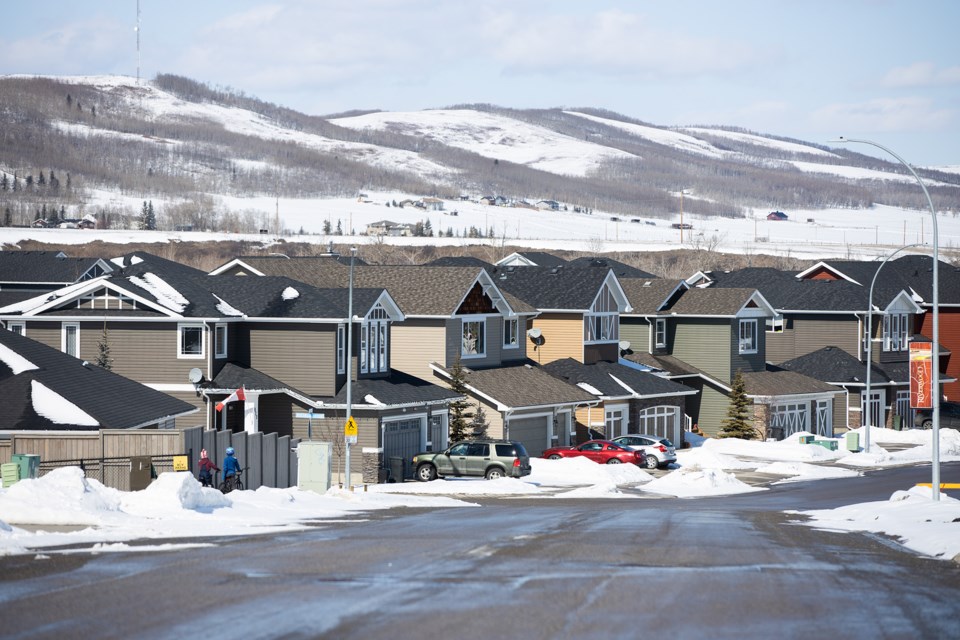The Town of Black Diamond is implementing new rules around address numbers and naming neighbourhoods, streets and public facilities.
Administration recently revised the Town’s 32-year-old civic addressing bylaw as plans were made to annex 332 hectares of Foothills County land to provide enough land for the next 50 years with an anticipated population of 10,232. The annexation proposal was approved by the Municipal Government Board last month to take effective retroactively on Jan. 1.
The new civic addressing bylaw, approved by Black Diamond town council at its March 18 meeting, rescinds the 1988 version, said planning and development officer Rod Ross.
“We reviewed addressing bylaws adopted by some of our municipal neighbours and used one as a template, tweaking it for the Town of Black Diamond’s purposes,” Ross said.
Changes include requiring minimum address number sizes on the front of houses, businesses and other buildings, based on how far they are from the road.
The bylaw requires numbers for buildings 15 metres or closer to the road be 10 cm tall, those 15 to 20 metres from the road to be 15cm tall and those 20 metres or further from the road to be 20cm tall. The bylaw also states that the numbers cannot be obstructed by any objects and must contrast with the background.
Ross said the bylaw also requires buildings under construction to have the address number temporarily posted and visible from the road for such reasons as delivery purposes or an emergency.
Numbers must also be posted for buildings and parcels that front onto rear lanes, which Ross said wasn’t required in the previous bylaw.
While a property owner can apply to the Town to change the municipal address of a building or parcel, Ross said it will be subject to administrative review in accordance with Town policies and procedures.
In addition, the Town may change the address of a building or parcel at any time to ensure consistency with Town policies.
“The former bylaw allowed the landowner to appeal if administration were to change an address for whatever reason, but this bylaw eliminates that,” said Ross. “Administration makes the decision and there is no appeal to council on that matter.”
Fines for not displaying address numbers as specified in the bylaw increased from $25 in the old bylaw to $250 for the first offence, $500 for the second and $1,000 for the third and subsequent violations of the bylaw.
Ross said administration will communicate the bylaw changes to the public to give people time to comply before any fines are implemented.
“Fines are always the last resort,” he said. “It’s education first to try to convince people of the wisdom of complying with the Town’s regulations.”
In addition to updating the Town’s civic addressing bylaw, administration also updated policies surrounding civic addressing with the Assigning of Civic Addressing Policies and Procedures and the Naming of Roads and Public Places Policies and Procedures. Both were approved by council on March 18 and replace the 2004 version.
The Naming of Roads and Public Places and Procedures states that names can recognize or commemorate individuals, important events, history or natural and geographical features in the area, as well as flora and fauna.
“A list of recommended names will be prepared by administration in consultation with the public and will be presented to council,” Ross said. “This way we don’t have to reach out to the public every single time. We have a list that can be consulted and council can draw from that as required. The list would be updated from time to time as necessary.”
Ross said road names assigned to subdivided or newly-developed areas were often proposed by the developer and approved by administration, with no guidelines in place.
“We’re happy enough with the names that were assigned, but now we have a policy that provides a little bit more guidance in terms of names that would be acceptable,” he said.
Now, roads will be named by administration in collaboration with the developer, but guided by the name of the subdivided area, he said.
“The roads will be derivatives of that community name,” he said. “Council would have the responsibility of approving the community name and then the road names would be consistent with the name for the area. Administration could assist with naming local roads in accordance with the policy.”
As for naming parks and facilities, Ross said it was often done by council on an ad-hoc basis, also without the guidance of a policy or procedure.
The Naming of Roads and Public Places Policies and Procedures provides guidelines for how council can approach assigning names to municipal property like parks, pathways, buildings, facilities, neighbourhoods and area structure plans, he said.




.png;w=120;h=80;mode=crop)